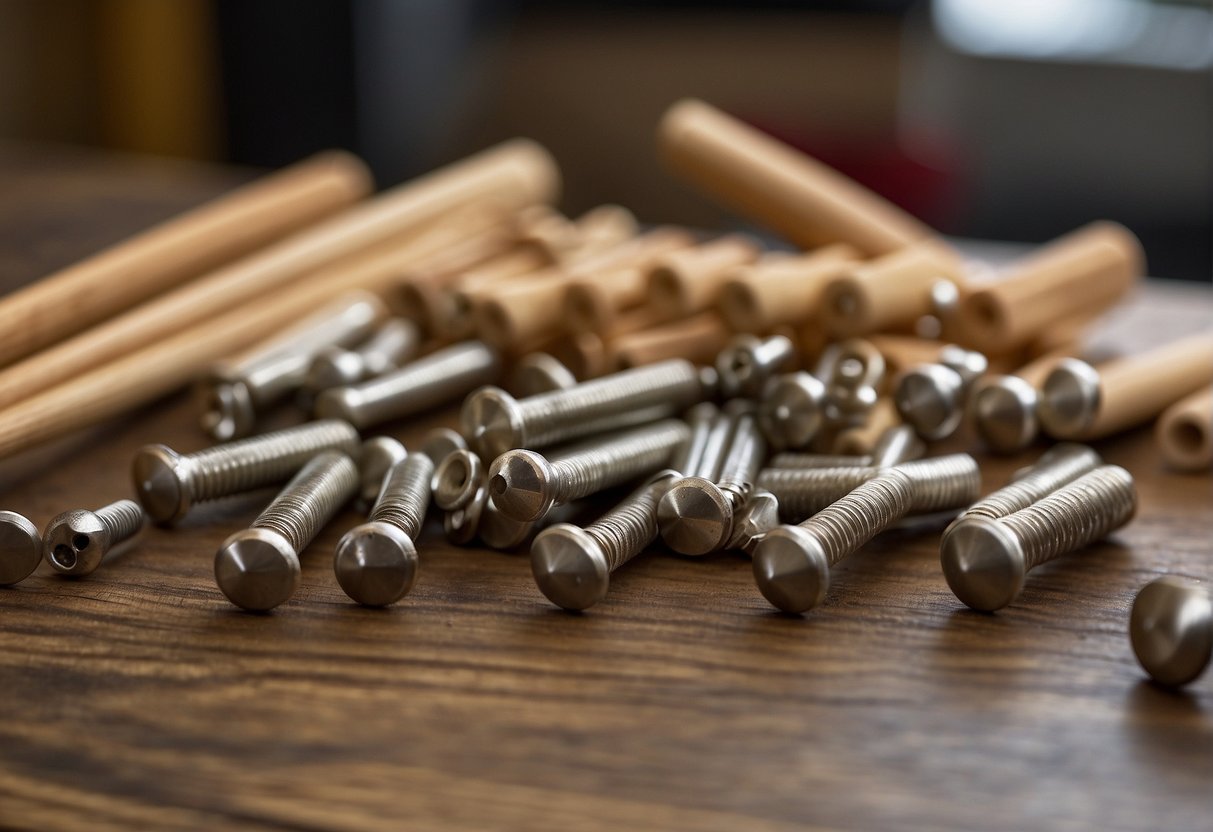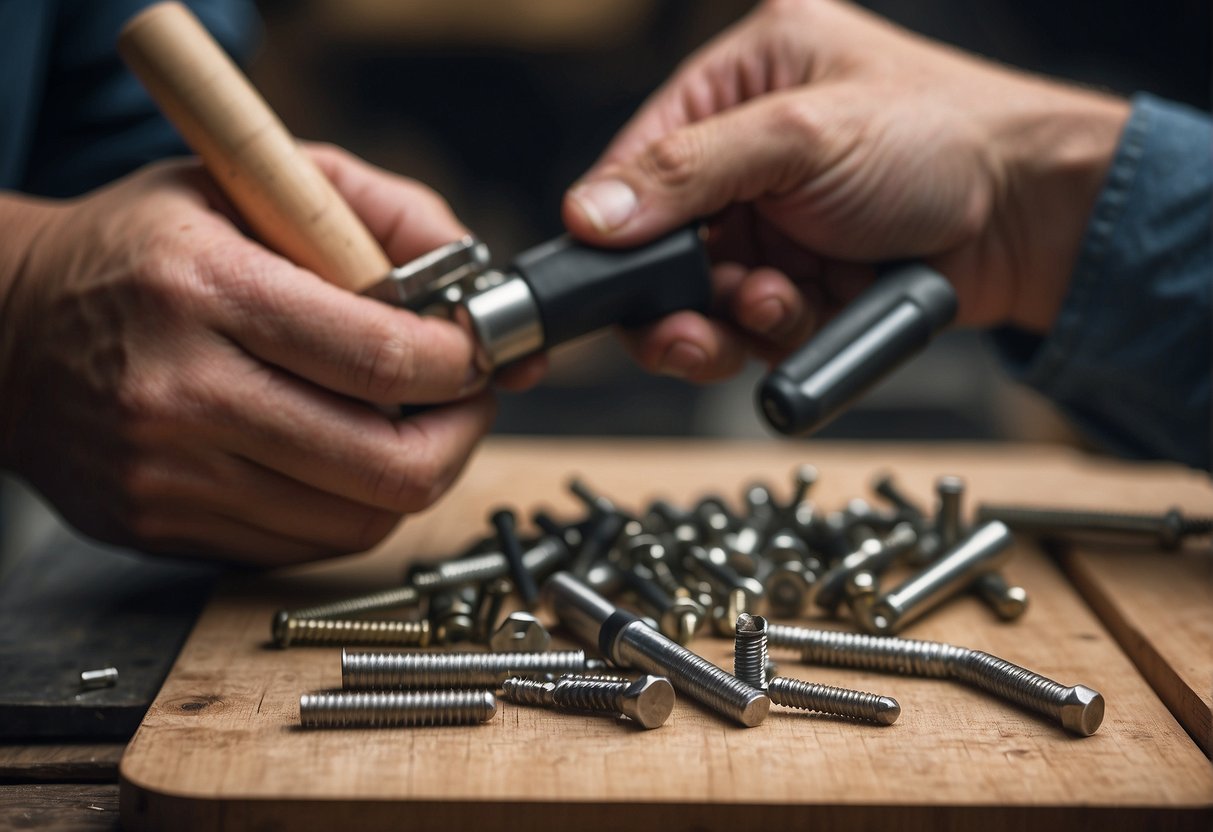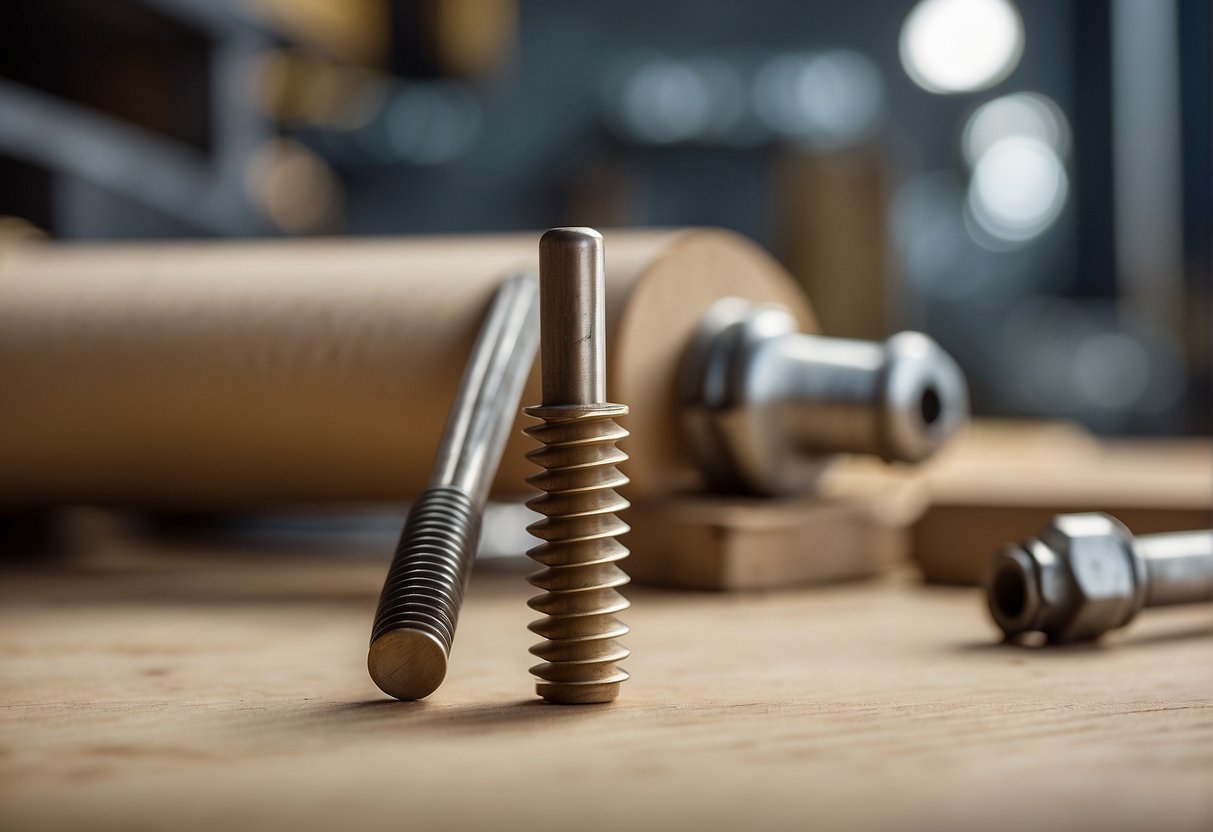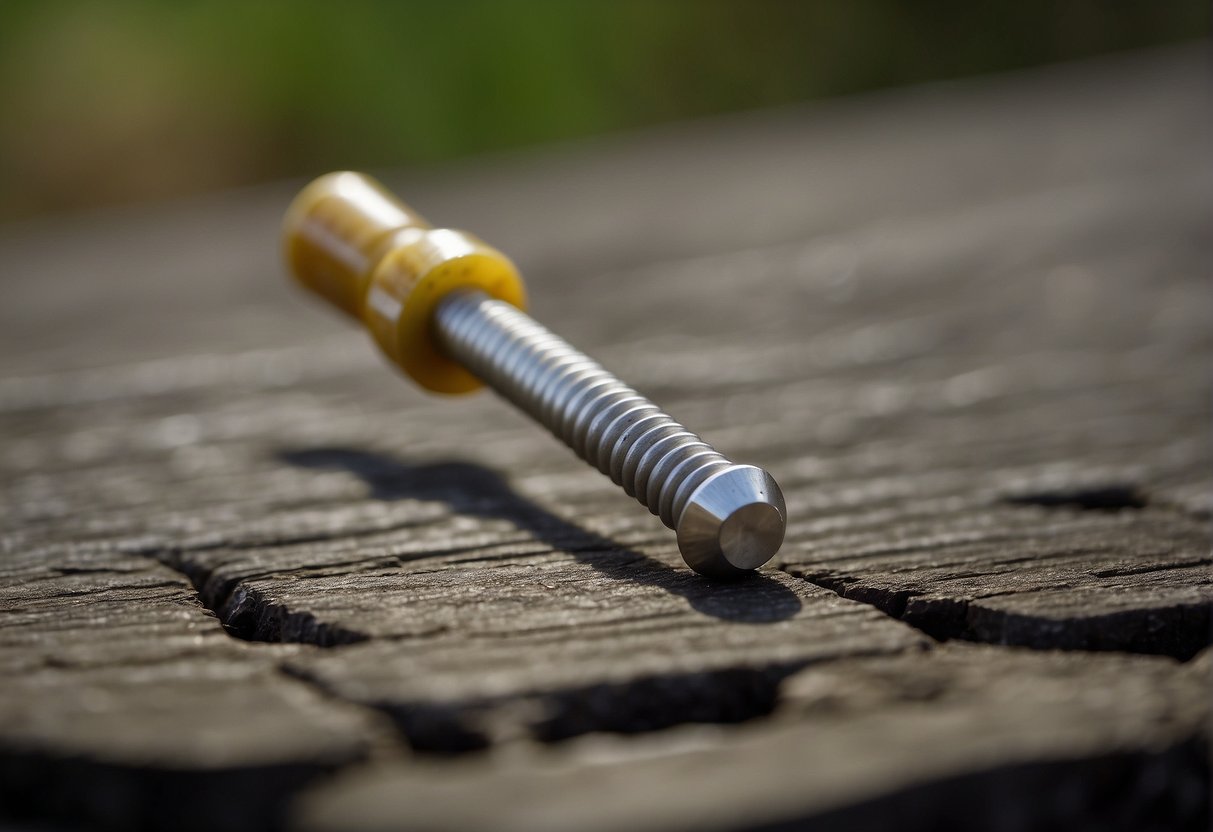As a woodworker, one of the most important decisions you will make is choosing the right joinery method for your project. The two most popular options are dowels and pocket screws. Both methods have their pros and cons, and the choice between them will depend on the specific needs of your project. In this article, I will explore the differences between dowels and pocket screws and help you decide which one is right for your woodworking project.
Understanding basic joinery is key to making a well-informed decision. Dowels are wooden pins that bridge between the joint, while pocket holes utilize a mechanical fastener (a screw). Both methods have been used for centuries and are effective in their own way. The choice between the two will depend on the type of joint you need to make, the strength and durability required, and the aesthetic considerations of your project.
When it comes to tools and materials, both dowels and pocket screws require specialized equipment. Dowels require a dowel jig, which is used to drill precise holes for the dowels. Pocket screws require a pocket hole jig, which is used to drill angled holes for the screws. Both jigs are relatively inexpensive and easy to use, but they do require some practice to master. Understanding the techniques and applications of each method is crucial to ensure a successful project.
Understanding Basic Joinery
As a woodworker, it is crucial to understand the different types of joinery and their respective strengths. Joinery refers to the method used to connect two pieces of wood together. The most common types of joinery include dowel joints and pocket hole joinery.
Dowel Joints
Dowel joints involve drilling holes into two pieces of wood and then inserting a wooden dowel into the holes to connect the pieces. This type of joinery is known for its strength and durability. Dowel joints are often used in furniture making, as they can withstand a lot of weight and pressure.
One of the biggest advantages of dowel joints is that they can be used without the need for glue or screws. However, adding glue to the dowel joint can significantly increase its strength. This makes dowel joints an excellent choice for furniture that needs to be disassembled and reassembled frequently.
Pocket Hole Joinery
Pocket hole joinery involves drilling a hole at an angle into one piece of wood and then screwing it into another piece of wood. This type of joinery is quick and easy to do, making it a popular choice for DIY projects.
One of the benefits of pocket hole joinery is that it is relatively strong. However, it is not as strong as dowel joints. Pocket hole joinery also requires the use of screws, which can be problematic if the wood is too thin or if the screws are overtightened, causing the wood to split.
In summary, both dowel joints and pocket hole joinery have their advantages and disadvantages. While dowel joints are stronger and more durable, pocket hole joinery is quicker and easier to do. Ultimately, the choice between the two will depend on the specific needs of the project at hand.
Tools and Materials
When it comes to woodworking, having the right tools and materials is essential for creating strong and durable joints. In this section, I will discuss the tools and materials needed for both dowel and pocket hole joinery.
Dowel Jig and Drill Bit
To create dowel joints, you will need a dowel jig and a drill bit. A dowel jig is a tool that helps you drill precise holes at the correct angle and depth. There are many different types of dowel jigs available, ranging from simple jigs that clamp onto the workpiece to more complex jigs that require a drill press. The type of jig you choose will depend on the complexity of your project and your personal preference.
When it comes to drill bits, you will need a bit that matches the size of the dowel you are using. For example, if you are using 1/2-inch dowels, you will need a 1/2-inch drill bit. It is important to use a sharp drill bit to ensure clean and accurate holes.
Pocket Hole Jig and Screws
To create pocket hole joints, you will need a pocket hole jig and pocket hole screws. A pocket hole jig is a tool that helps you drill angled holes at the correct depth for pocket hole screws. There are many different types of pocket hole jigs available, ranging from simple jigs that clamp onto the workpiece to more complex jigs that require a drill press.
When it comes to pocket hole screws, there are many different sizes and types available. The size of the screw you choose will depend on the thickness of the workpiece you are joining. It is important to use a screw that is long enough to provide a strong and secure joint, but not so long that it will protrude through the other side of the workpiece.
In addition to the tools mentioned above, you will also need wood glue for both dowel and pocket hole joinery. Wood glue helps to strengthen the joint and prevent it from coming apart over time. You may also choose to use mechanical fasteners such as nails or screws in addition to dowels or pocket hole screws for added strength.
Techniques and Applications
Preparing Dowel Joints
To create a strong joint using dowels, it is important to ensure that the holes are drilled accurately and aligned properly. I usually clamp the two pieces of wood together and mark where the holes need to be drilled. Then, I use a drill bit that matches the size of the dowels to create the holes. It is important to drill the holes straight and at the right depth to ensure a strong joint.
Once the holes are drilled, I apply glue to the dowels and insert them into the holes. I then clamp the two pieces of wood together and let the glue dry. Dowel joints are strong and can be used for a variety of applications, including joining table legs and creating frames.
Creating Pocket Holes
Pocket hole joints are a quick and easy way to join two pieces of wood together. To create a pocket hole joint, I use a pocket hole jig to drill angled holes into one of the pieces of wood. The jig ensures that the holes are drilled at the correct angle and depth.
After the holes are drilled, I apply glue to the joint and use screws to attach the two pieces of wood together. Pocket hole joints are strong and can be used for a variety of applications, including joining cabinet frames and creating bookcases.
When creating pocket hole joints, it is important to ensure that the two pieces of wood are aligned properly. I usually clamp the two pieces of wood together to ensure that they are aligned before drilling the pocket holes.
Overall, both dowel joints and pocket hole joints are strong and versatile. The choice between the two depends on the specific application and personal preference.
Comparing Strength and Durability
Strength of Dowel vs. Pocket Screw Joints
When it comes to strength, both dowel joints and pocket hole joinery can create a strong joint. However, the strength of the joint depends on the size of the dowels or screws used, the type of wood being joined, and the glue used in the joint.
Dowel joints are known for their strength and are commonly used in furniture making. They create a strong joint because the dowels are inserted into pre-drilled holes and glued in place. The glue creates a bond between the dowel and the wood, which makes the joint even stronger.
Pocket hole joinery, on the other hand, relies on screws to create a joint. The screws are driven through angled holes and into the adjoining piece of wood. While pocket hole joints are strong, they may not be as strong as dowel joints because the screws do not create a bond with the wood like glue does.
Longevity in Furniture Making
When it comes to furniture making, longevity is an important factor to consider. You want your furniture to last for many years without falling apart or becoming loose.
Dowel joints are known for their durability and longevity. Because the dowels are glued in place, they create a strong bond between the pieces of wood. This bond is less likely to weaken over time, which means the joint will remain strong for many years.
Pocket hole joinery, on the other hand, may not be as durable as dowel joints. While the screws create a strong joint initially, they may loosen over time due to wood movement or other factors. This can cause the joint to become weak and the furniture to become wobbly or unstable.
Overall, both dowel joints and pocket hole joinery can create strong joints in furniture making. However, dowel joints are known for their strength and durability, which makes them a popular choice among furniture makers.
Aesthetic and Design Considerations
When it comes to the aesthetic and design of a woodworking project, the choice between dowels and pocket screws can have a significant impact. Here are some key considerations:
Visual Impact of Joinery
Dowels and pocket screws have different visual impacts on a finished project. Dowels are often visible on the surface of the wood, which can add a unique design element to the piece. On the other hand, pocket screws are hidden and do not add any visual interest to the design.
For some woodworkers, the visible dowels are a desirable feature that adds character and interest to the piece. For others, the hidden pocket screws are preferable as they do not detract from the overall appearance of the project. Ultimately, the choice between dowels and pocket screws will depend on the desired aesthetic of the finished piece.
Design Flexibility
Another important consideration when choosing between dowels and pocket screws is design flexibility. Dowels are limited in their placement as they require a pre-drilled hole to be inserted into. This can limit the design options for a project.
Pocket screws, on the other hand, can be placed in a variety of locations without the need for pre-drilled holes. This can allow for more flexibility in the design of a project and can make it easier to create hidden joints that are not visible on the surface of the wood.
When designing cabinetry or picture frames, for example, the ability to create hidden joints with pocket screws can be a significant advantage. However, if visible joints are desired for aesthetic reasons, dowels may be the better choice.
Overall, the choice between dowels and pocket screws will depend on the specific design and aesthetic goals of the project. By considering the visual impact of the joinery and the design flexibility of each option, woodworkers can make an informed decision about which method to use for their project.
Practical Insights for Woodworkers
Ease of Use and Learning Curve
When it comes to ease of use and learning curve, pocket screws are generally considered to be easier for beginners to learn and use, while dowels require a bit more skill and precision. Pocket screws are a great option for those who are just starting out with DIY woodworking projects, as they require less precision and can be used on a wide variety of materials. Dowels, on the other hand, require a bit more skill and precision, as they need to be drilled perfectly straight and at the correct depth in order to work effectively.
Cost and Accessibility of Tools
When it comes to the cost and accessibility of tools, pocket screws are generally more expensive than dowels. Pocket screw jigs can be quite pricey, and the screws themselves can add up over time. Dowels, on the other hand, are relatively inexpensive and can be found at most hardware stores. Additionally, doweling jigs are relatively inexpensive and can be used for a wide variety of projects.
Overall, both pocket screws and dowels are great options for woodworking projects, and the choice ultimately comes down to personal preference and the specific needs of the project. While pocket screws are generally considered to be easier to use and more accessible, dowels are a great option for those who are looking for a more traditional approach to woodworking and want to focus on craftsmanship and precision. Regardless of which option you choose, both pocket screws and dowels can be a lot of fun to work with and can help you create beautiful, high-quality pieces that you can be proud of.
Frequently Asked Questions
What are the strength differences between dowel joints and pocket screws?
Dowel joints are generally considered stronger than pocket screw joints. This is because dowel joints rely on glue to hold the joint together, whereas pocket screws rely on the screw to hold the joint together. The glue in dowel joints creates a stronger bond than the screw in pocket screw joints.
Can dowel and pocket screw joinery be combined effectively in woodworking?
Yes, dowel and pocket screw joinery can be combined effectively in woodworking. The combination of the two methods can create a stronger joint than either method used alone. For example, using dowels to reinforce a pocket screw joint can add extra strength to the joint.
What are the cost implications when choosing between dowels and pocket screws?
Dowels are generally more expensive than pocket screws. This is because dowels require more time and skill to install than pocket screws. However, the cost difference is not significant and should not be the primary factor in choosing between the two methods.
Are pocket holes a suitable choice for building strong shelving units?
Yes, pocket holes are a suitable choice for building strong shelving units. However, it is important to use the correct size and number of pocket screws to ensure that the joint is strong enough to support the weight of the shelf.
What alternatives to wooden dowels exist for joinery?
There are several alternatives to wooden dowels for joinery, including metal dowels, biscuits, and floating tenons. Each of these methods has its own advantages and disadvantages, and the choice of method will depend on the specific project and requirements.
How do dowel joints compare to traditional screw joints in terms of durability?
Dowel joints are generally considered more durable than traditional screw joints. This is because dowel joints distribute the load evenly across the joint, whereas screw joints concentrate the load in the area around the screw. Additionally, dowel joints are less likely to loosen over time than screw joints.

Hi, I’m Sal Muller of Tooltrip.com. My DIY experience led me to understand essential power tools for home projects. Tooltrip.com guides enthusiasts and professionals in choosing right tools for any job. I provide concise top tool reviews for easier, efficient DIY.





